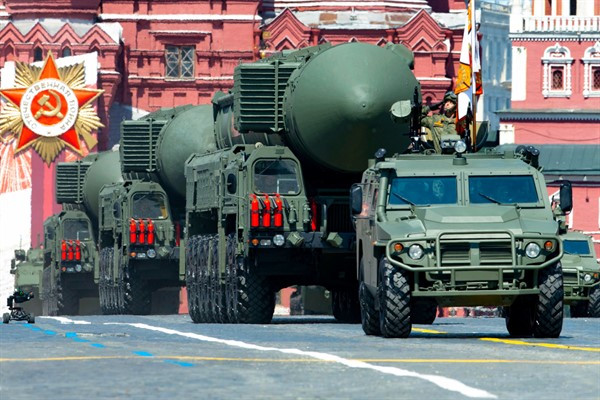In a phone call with Russian President Vladimir Putin this week, President Joe Biden discussed the two leaders’ intent to “pursue a strategic stability dialogue on a range of arms control and emerging security issues,” according to a White House statement. Specifically, Biden said he hopes to build on the U.S. and Russia’s recent agreement on a five-year extension of the New Strategic Arms Reduction Treaty, or New START, which is the last remaining nuclear arms control deal between the two countries.
According to Sarah Bidgood, the director of the Eurasia Nonproliferation Program at the James Martin Center for Nonproliferation Studies in Monterey, California, the real test now will be whether Washington and Moscow can go beyond New START despite an overall tense bilateral relationship. Bidgood joined WPR’s Elliot Waldman on the Trend Lines podcast this week to talk about how the two countries can look to the Cold War for examples of how to move the ball forward on arms control.
Listen to the full interview with Sarah Bidgood here:

